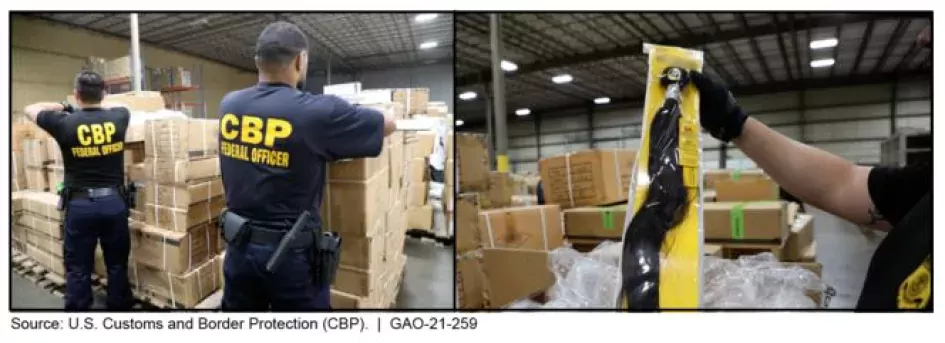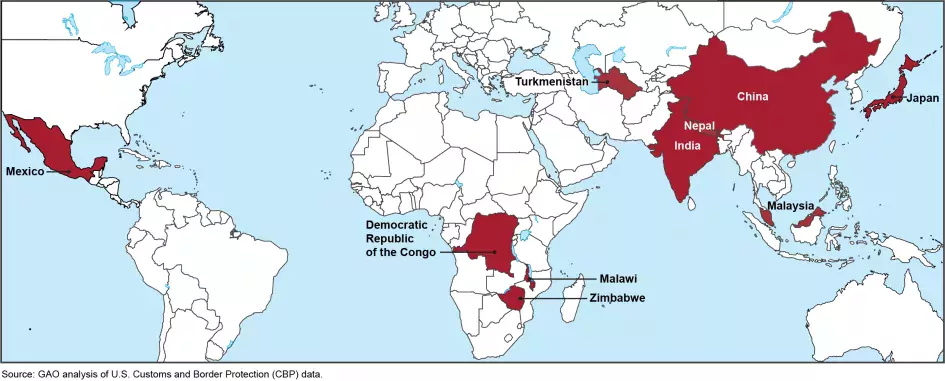Federal Efforts to Prevent Imports Produced Using Forced Labor From Entering the U.S.
Recent media reports have highlighted the alleged use of forced labor in consumer goods—items ranging from chocolate and seafood to clothing, solar panels and disposable rubber gloves. Globally, an estimated 25 million adults and children are compelled to work under threat or coercion. Their labor generates global profits totaling about $150 billion annually.
U.S. law prohibits imports produced with forced labor. U.S. Customs and Border Protection (CBP) is tasked with preventing these goods from entering the U.S.
Today’s WatchBlog post looks at our recent reports about CBP’s efforts.
What is CBP's role?
CBP’s Forced Labor Division investigates allegations of forced labor, including collecting evidence and communicating with other federal agencies to obtain or share relevant information.
On the basis of information the division provides, CBP directs officials at U.S. ports of entry to detain shipments of goods that CBP suspects were produced with forced labor. From October 2020 through March 2021, CBP detained 371 such shipments.
Importers of detained shipments have 3 months to provide sufficient proof that the goods were not produced with forced labor; otherwise, the goods will not be permitted into the U.S. In some cases, the goods may be re-exported to another country, while in other cases, they may be seized by CBP.
CBP Agents Inspecting a Detained Shipment of Hair Products from China
Image

What has CBP found?
CBP has directed port officials to detain shipments of a variety of goods from around the world. Most of the goods that are currently flagged for detention are from China. However, CBP may also detain shipments of certain goods from the Democratic Republic of the Congo, India, Japan, Malawi, Malaysia, Mexico, Nepal, Turkmenistan, and Zimbabwe, and from 3 fishing vessels and a fishing fleet.
Some of the goods that have been flagged for detention are from specific manufacturers, such as hair products produced by Hetian Haolin Hair Accessories in China, or palm oil and palm oil-products manufactured by FGV Holdings Berhad in Malaysia. Other goods are from a specific location or country—for example cotton products from Xinjiang, China, and artisanal rough-cut diamonds from the Marange diamond fields in Zimbabwe. Seafood imports from specific fishing vessels, such as seafood from the Taiwan-flagged Yu Long No. 2, are also among the goods currently targeted by CBP.
10 Countries from Which CBP Currently Detains Certain Imported Goods It Suspects Were Produced with Forced Labor, as of April 2021
Image

What can CBP do to improve its efforts?
In 2020 and 2021, we issued 3 reports with 5 recommendations to improve CBP’s work to prevent the importation of goods made with forced labor. We recommended, among other things, that CBP enhance communication with non-governmental organizations, federal agencies, and the private sector to clarify the type of information that would help CBP initiate and investigate forced labor cases. We also recommended that CBP assess the Forced Labor Division’s workforce needs and improve its data on forced labor cases. CBP agreed with all our recommendations.
- Comments on GAO’s WatchBlog? Contact blog@gao.gov.





